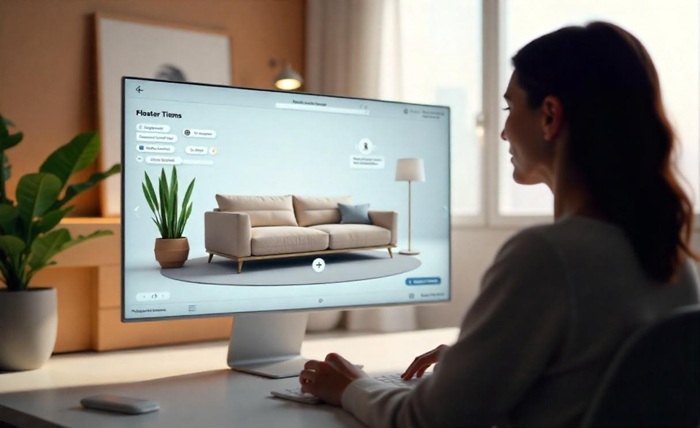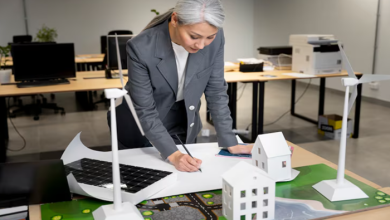
E-commerce is no longer just about convenience—it’s about experience. In a world where consumers crave interaction, 3D visualization and product customization have emerged as the next great leap in online retail. Platforms like Zakeke are leading this transformation by allowing shoppers to interact with products in lifelike detail, rotating, customizing, and visualizing them as if they were holding them in their hands. What was once the realm of high-end tech demos is now an accessible, business-critical tool reshaping how brands sell online.
From Static to Dynamic: The Shift Toward Interactive Shopping
For decades, online stores have relied on flat product images and description-heavy listings. But static content can’t fully capture the tactile, emotional connection that drives purchasing decisions. The evolution toward 3D visualization changes that dynamic completely. Instead of clicking through galleries, customers can now manipulate products in real time—turning them around, zooming in, and exploring every detail.
This interactivity builds confidence. Studies show that consumers who engage with 3D or AR (augmented reality) content are far more likely to complete a purchase and significantly less likely to return items. Seeing a product from every angle reduces uncertainty—the digital equivalent of walking into a store and examining something up close.
Customization: The Era of “Designed by You”
While visualization makes products more engaging, customization makes them personal. Shoppers today expect more than mass-produced options; they want individuality and control. Whether it’s customizing a laptop’s color, engraving initials on jewelry, or designing a sofa’s fabric and finish, personalization is becoming a hallmark of modern commerce.
This is where Zakeke shines. The platform provides a seamless way for businesses to offer real-time product customization directly on their websites. Integrated with popular e-commerce systems like Shopify, WooCommerce, and BigCommerce, Zakeke lets customers personalize products using intuitive, easy-to-use design tools. Each change updates instantly in 3D, providing a tangible sense of ownership before the product even exists physically.
For merchants, the benefits are equally compelling: higher engagement, fewer errors in custom orders, and improved margins. Personalization transforms customers into co-creators—an emotional connection that drives loyalty and repeat sales.
Zolak and the Art of Immersive Visualization
Another major player in this fast-growing field is Zolak, a platform specializing in immersive 3D environments. Rather than focusing solely on individual products, Zolak enables brands to build virtual showrooms—spaces where customers can explore items in context. Imagine furnishing an entire virtual living room, swapping out couches, lamps, and rugs, and seeing how each combination looks instantly.
Zolak’s technology uses advanced rendering and AI to create photorealistic visuals that load directly in the browser. It’s particularly valuable for industries like furniture, home décor, and interior design, where spatial awareness and aesthetic harmony matter as much as individual product features. While Zakeke focuses on giving shoppers creative control, Zolak provides an architectural experience that places products within a lifelike digital world.
Why 3D Visualization Is Becoming Essential
Adopting 3D and AR isn’t just about keeping up with trends—it’s about future-proofing retail strategy. The benefits extend far beyond aesthetics:
- Increased conversions: Interactive 3D models capture attention and keep customers engaged longer.
- Reduced returns: When shoppers know exactly what they’re getting, dissatisfaction plummets.
- Higher perceived value: Customization options often justify premium pricing.
- Stronger brand identity: Cutting-edge visuals reinforce a company’s reputation for innovation.
As bandwidth and device performance improve, 3D visualization becomes faster, smoother, and more accessible—even on mobile. The cost of implementing these technologies has dropped significantly, making them viable not just for large enterprises but also for small and mid-sized online retailers.
The Technology Behind the Magic
Modern 3D visualization platforms leverage technologies once reserved for video games and animation studios. WebGL, 3D rendering engines, and cloud computing now allow for real-time, browser-based experiences without the need for heavy downloads or plugins. Combined with AI-driven automation, platforms can generate photorealistic models and simulate materials like wood, metal, and fabric with uncanny accuracy.
AR takes this a step further, letting customers “place” a product in their actual environment using their phone camera. Want to see how that new table fits in your dining room? Just tap and preview. This fusion of physical and digital—sometimes called phygital commerce—is quickly becoming the gold standard for online retail.
The Road Ahead: Blurring Digital and Physical Worlds
Looking forward, 3D visualization and customization will merge seamlessly with AI recommendation engines, metaverse platforms, and virtual reality showrooms. Imagine entering a fully digital store where every product can be customized, previewed, and purchased in real time—without ever leaving your home.
Companies like Zakeke and Zolak are already laying the groundwork for this evolution, making immersive shopping not a novelty but an expectation. The future of e-commerce won’t just be about displaying products—it will be about crafting experiences that feel real, personal, and emotionally engaging.
Final Thoughts
The rise of 3D product visualization marks one of the most profound shifts in online commerce since the invention of mobile shopping. Consumers no longer want to browse; they want to experience. Whether through Zakeke’s intuitive customization or Zolak’s immersive showrooms, 3D technology is turning e-commerce into an interactive canvas where creativity meets commerce. The brands that embrace this transformation early will not just sell products—they’ll sell possibilities.




